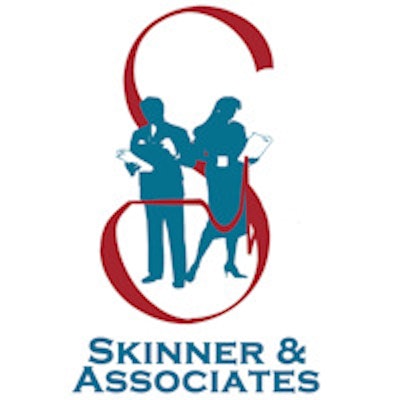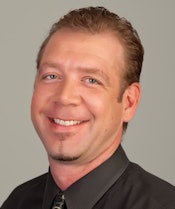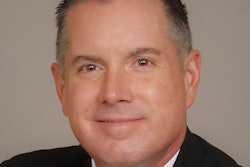
As healthcare organizations consider stratifying their imaging technology (i.e., deconstructing a unified single-vendor platform into modular and interoperable layers of applications), the process of augmenting their technical skill sets to sustain a newly adopted platform can be easily overlooked.
While part 1 of this series provided a high-level overview of stratified technology and what skills and roles are required to plan for an environment, part 2 assumes an organization has already analyzed the requirements and gaps within its existing environment and is focused on fulfilling those needs.
 Dave Whitney, chief technology officer of Medical Diagnostic Imaging Group.
Dave Whitney, chief technology officer of Medical Diagnostic Imaging Group.How can an organization address resource challenges? While this may seem like an age-old human resource challenge, building or sustaining a business may conflict with an organization's strategy to grow a business. Growth cannot be impacted by a behind-the-scenes reallocation of resources. Metaphorically, addressing these challenges is similar to changing the tires on a race car while it circles the track. Typically, pit stops are designated along straightaways of a track and designed for addressing maintenance at a point of lesser course disruption and influence from track participants.
As with racing, timing is essential to performing maintenance at points that are least disruptive to day-to-day operations or disruptive to growth strategies. Organizations must be free to address the challenges of a twisty road ahead, while establishing predetermined maintenance points to address the car. Timing is essential; expedient execution is critical. Many solutions exist to address the timing and execution of an organization's resources.
Continuing education programs
Continuing education programs are an excellent option for organizations maintaining a clearly defined and long-straightaway approach to future state development. Education and training programs provide an excellent long-term strategy, but may not provide for the immediate needs for an organization. While these programs provide career-path engagement and an excellent employee-retention benefit, they must make sense for the bigger picture of an organization's transformation. It is essential to invest in your talent pool, but cost, duration, staff capacity, and criticality should be mutually considered when approaching resource gaps. Regardless, an organization must still understand its future-state road map, and that one solution may not fit all technical initiatives.
Permanent placement
Permanent placement is another excellent option for organizations maintaining a clearly defined and long-straightaway approach to future-state development. Long-term recruiting may require minimal upfront investment, but candidates must be fully vetted to understand what value and impact they will have within an organization's current and future state. Although permanent placement is a short-term investment, long-term expenses to maintain employee skill sets offset upfront savings and are critical to maintain value and employee satisfaction needed for retention.
An organization must also closely track employee satisfaction to ensure these investments are protected over the longer term and that return on investment is realistic. Social media, job boards, and word-of-mouth provide cost-effective avenues for sourcing talent, but an organization must maintain a strong understanding of resources available in today's market. Now that an organization understands which gaps exist, it must ensure each candidate is vetted by a stakeholder who understands what specifically to look for within the pool of candidates. By considering a quality recruiter with deep industry relationships, an organization can offset much of this job-to-candidate matching and achieve a high success rate of employee adoption.
Staff augmentation
Staff augmentation is an excellent option for organizations attempting a challenging or short- to mid-length straightaway approach to future-state development. As a short to mid-term solution, staff augmentation will handle a here-and-now solution, but expense may be higher as compared to permanent placement over the duration of an initiative. A major advantage to augmentation is the ability for staffing in accordance with the scope of an initiative. Cost can be contained and long-term expense is limited if the objective and duration is precisely defined. However, an organization must always examine its future state road map and consider any likelihood of the role as a permanent placement. In such event, identifying a temp-to-perm placement is always possible during initial negotiation and selection. Once again, utilizing a quality recruiter or consultant to assist with augmentation can provide a high success rate of employee adoption.
Consultants
Consultants can be an excellent choice for organizations addressing a very challenging, undefined, or extremely short straightaway to future-state development. Although the highest short-term expense, a quality consultant can provide the most flexible solution for initiative-driven objectives. Instead of focusing on individual talents, an organization can focus on initiatives while exploiting a consultant's toolbox of skill sets. However, choosing the right consultant or group requires an investment in diligence. The chosen consultant must be able to deliver on time and at cost, and also provide the value as defined by an organization's needs. With the correct choice, an organization can accurately forecast and control bottom-line costs. Keep in mind that expense overrun can become a costly mistake with these precious commodities when an organization loses sight of its short-term initiatives and milestones.
In conclusion, creating a stratified imaging platform will provide a flexible and cost-effective solution for an organization. However, the sustainability and success of a stratified environment is dependent on the people who support it. By sourcing personnel according to the results of resource analysis, an organization can effectively realign its people with the processes and technology.
Dave Whitney is a former candidate and client of Skinner and Associates. He is the chief technology officer at Medical Diagnostic Imaging Group, based in Phoenix, and a frequent contributor on the subject of health information technology.
Reprinted with permission of Skinner and Associates, a full-service recruiting and consulting firm specializing in healthcare IT and informatics and imaging. This includes EMR, electronic health records, health information exchanges, VNA, PACS, clinical interoperability, GRC, and cloud technologies. It provides direct-hire and contract solutions to client employers and candidates nationwide and has been in business for more than 15 years. The firm can be contacted at www.SkinnerandAssociates.com or www.skinnerjobs.com.
The comments and observations expressed herein are those of the author and do not necessarily reflect the opinions of AuntMinnie.com.



















